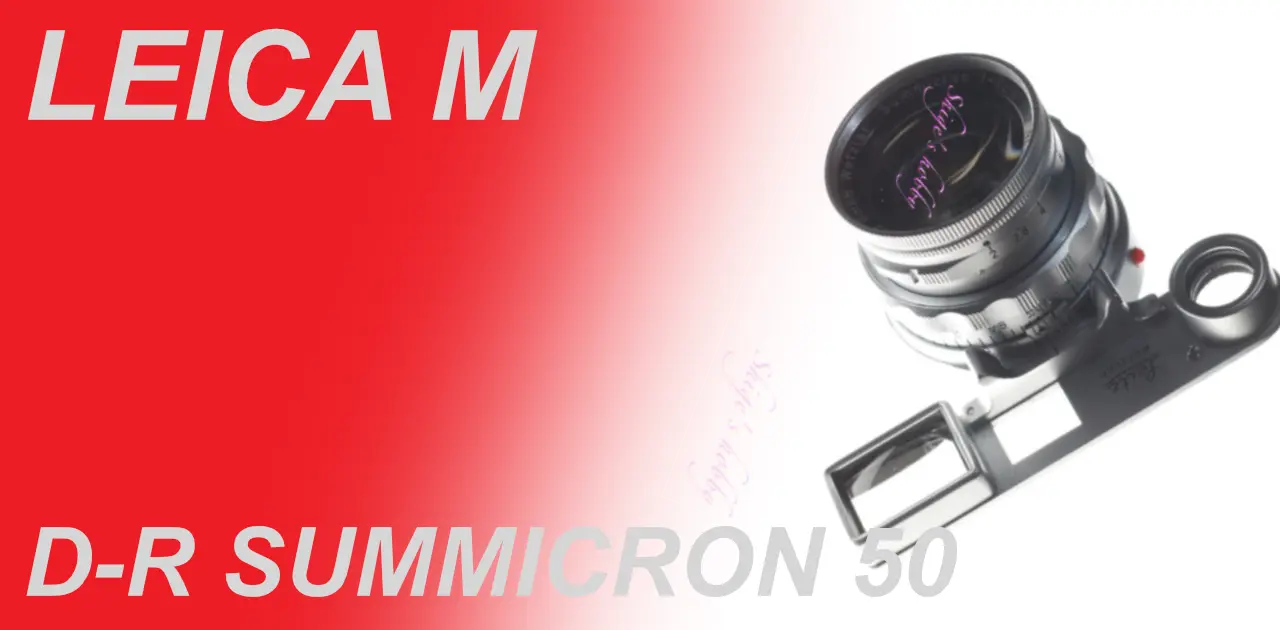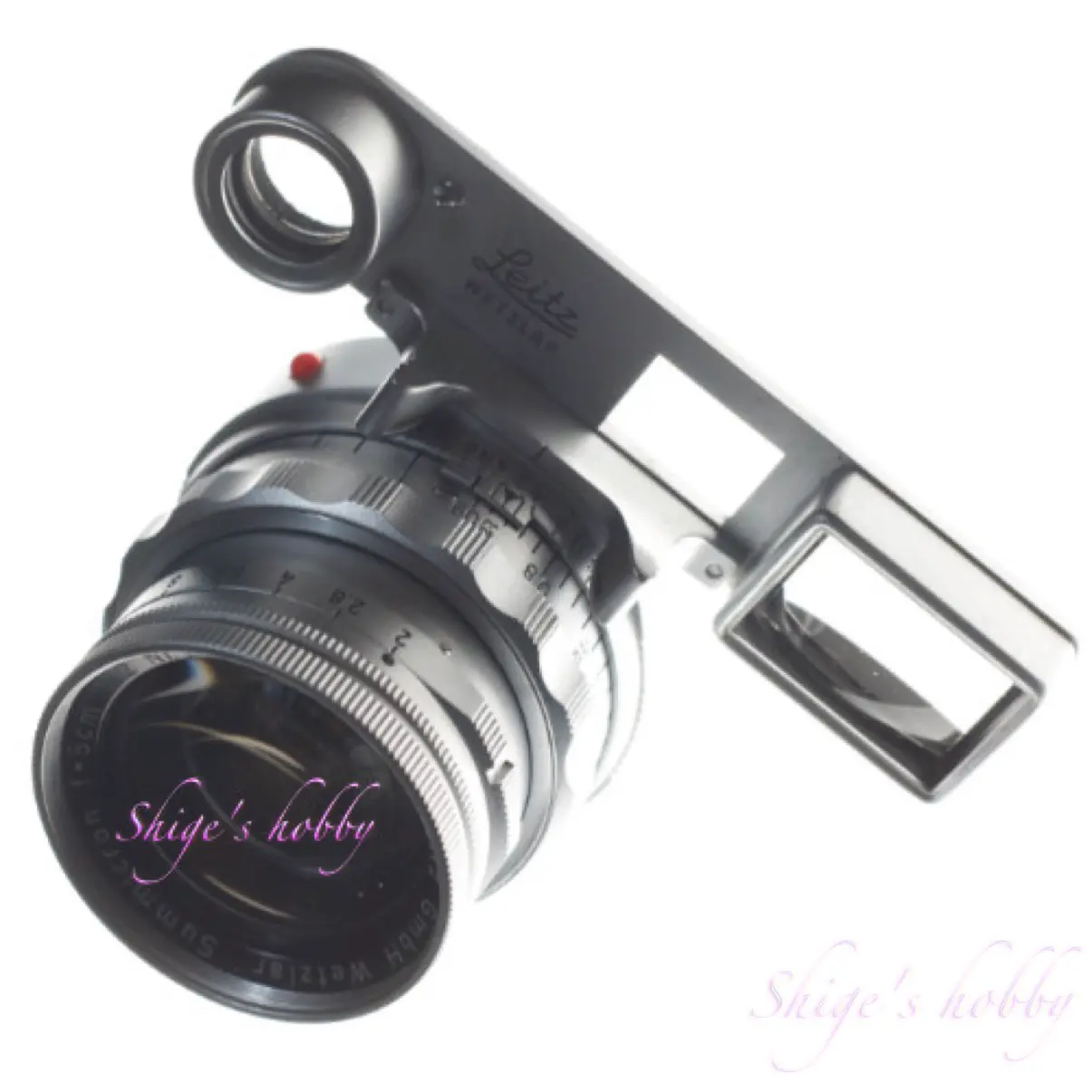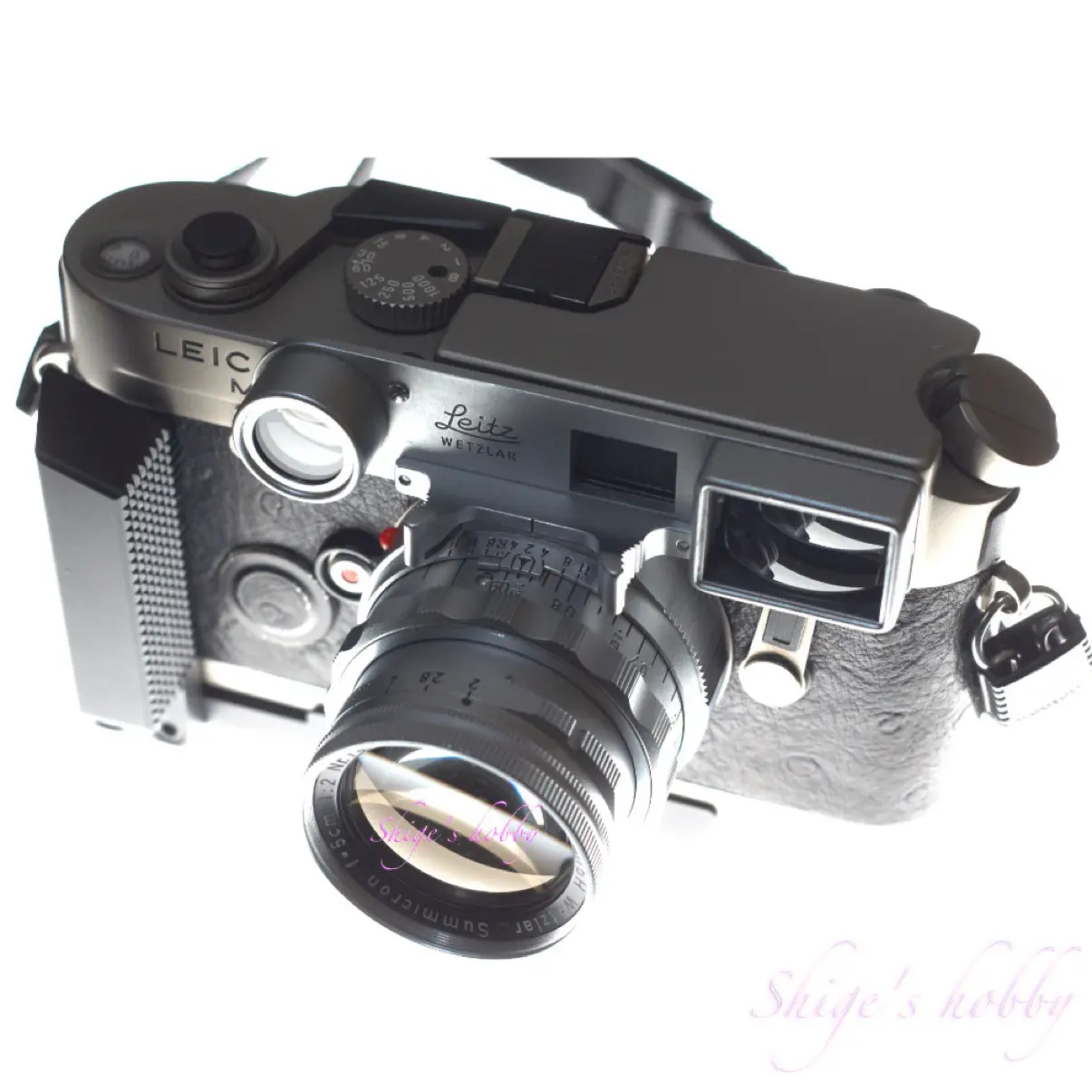Dual focus DR SUMMICRON M 50mm

A review and Photo example of the DR SUMMICRON M 50mm F2 with the LEICA M6.
Table of contents
Gallery
- The sample photos were taken with a LEICA M6 + KODAK E100VS + NIKON COOLSCAN-V
Review


1.Overview
The DR SUMMICRON M 50mm F2 is a lens that allows close-up shooting up to 0.48m by attaching glasses (close-up adapter) to the Summicron 50mm. The gimmick is mechanical, and when the glasses are attached to the lens, the ball on the lens side is pushed in, allowing the helicoid to move to the close-up area. If the glasses are removed from the lens, the focus is adjusted to the range of ∞ to 1m, and it can be handled in the same way as a normal lens.
The stopper part on the glasses is set to the total height of the camera before the M6, so for cameras whose total height has increased due to the addition of electronic parts after the M6-TTL, the glasses stopper gets in the way and the glasses cannot be attached. If you remove the stopper, it is possible to attach the lens to the camera, and although I have not actually tried it with the M6-TTL, there should be no problem using it. This is why you can see used DR Summicron glasses with the glasses stopper removed.
When I had this lens, I did not have a Hexar RF, so I do not know whether it is possible to attach it and use it. It is probably possible to wear and use them if you remove the glasses stopper.
2.Usage
As you can see from the exterior photo, the DR Summicron M 50mm F2 is a lens with glasses. The glasses of the DR Summicron are removable and are made differently from other 35mm lenses with glasses.
The main purpose of other 35mm lenses with glasses is to expand the 50mm viewfinder frame of the M3 to 35mm, and the minimum shooting distance is 0.65m, which is shorter than the 0.7m without glasses, but it does not have the close-up shooting capability of 0.48m like the DR Summicron.
The image quality is the well-known 50mm Summicron, and the parallax at close range is moderately corrected, so it is not difficult to use as long as you do not push the composition to the limit.
The silver chrome exterior of the lens from this era has a very beautiful matte finish, unlike the smooth painted surfaces of modern lenses, probably due to the surface finish. The knurling of the focus ring is also elaborately made, which is not possible with modern lenses, and it is a lens that gives you a sense of satisfaction to own.
Since many lenses were produced, there are many in good condition, and if you look around, you will find one that you like.
Before 2010, lenses with glasses were sold at a fairly low price, but in the 2020s, prices have risen like other lenses.
Lenses with glasses spoil the lightness of rangefinder cameras when attached to a camera, but they give the camera a heavy, mechanical feel. When the camera is attached with a grip and glasses as shown in the photo, the entire camera becomes quite heavy, and it is a little difficult to hang it around your neck, but it is definitely noticeable.
When used with a mirrorless camera via a mount adapter, it is basically an inconvenient element. However, if you remove the glasses to take close-up shots, you need to change the lens mode to close-up mode and then move the helicoid while pressing the ball at the connection between the lens and the glasses, which makes shooting a hassle. As of 2024, mount adapters with auxiliary helicoids are available from various companies, so it is more convenient to use them. Since the lens part of the DR Summicron is fixed and the focus position is adjusted by moving the helicoid, there is no difference between using the auxiliary helicoid and using the close-up mode. With mirrorless cameras, there are no issues with focusing as long as you use the EVF.
When I was using film cameras, I liked using this because it allowed me to take close-up shots.
I have never used it with digital M-type Leica cameras because the stopper parts get in the way when attaching it due to the height of the camera. The Map Camera column THE MAP TIMES states that close-up shots are not possible with the digital M, and the Leica Wiki states that the DR version cannot be used with the M8 and M9. I have not confirmed whether this is due to the stopper on the glasses or some other reason that makes it impossible to attach.
3.Summary
In conclusion, to sum up the DR SUMMICRON M 50mm F2, it is a rare lens that can get as close as 0.48m for a rangefinder film camera. The focal length switching mechanism is also elaborate, which is a must-have for those who like mechanics.
However, with mirrorless cameras, there is an option for close-up shots without using this mechanism, so there is little need for it. I have heard that the manufacturing quality of this lens is high, but I don’t know if that is true.
Specification and Competitor
The first-generation Summicron came in two varieties, a retractable one and a fixed one, and the fixed one came with or without glasses, meaning there were three different lenses in total. The lens configuration was the same for all lenses, with seven elements in six groups.
Looking at page 84 of “Leica Lenses of the World” by Nakamura Fumio, we can see that the DR Summicron has the same lens configuration, but different lens elements.
| Items | DR SUMMICRON | SUMMICRON |
| Focal length(mm) | 50 | 50 |
| Max aperture | 2 | 2 |
| Min aperture | 16 | 16 |
| Lens Construction | 7 elements in 6 groups | 6 elements in 4 groups |
| Aperture blades (Diaphragm) | 10 | 8 |
| Min distance(m) | ∞〜1.0 | ∞〜0.7 |
| With goggles(m) | 0.9〜0.48 | – |
| Lens length(mm) | 43 | |
| Max diameter(mm) | 53 | 53 |
| Filter Size(mm) | 39 | 39 |
| Hoods | SOOFM / ITDOO / IROOA | Build in |
| Weight(g) | 339 | 240:Black 335:Silver,Titan |
| Goggles weight(g) | 52 | – |
| Release date | 1956 | 1978 |
| Production numbers | ? | 1977-2005 94,573+ |
Reference links
- LEICA APO-SUMMICRON-M 50mm official page
- Description of SUMMICRON-M 50mm by LEICA Wiki
- “Leica Lenses of the World”・There is a description of DR-SUMMICRON on page 84・Ads by Amazon
Update history
- 2024.11.5
- 2024.02.20:Update article
- 2022.04.29:First draft

Leave a Reply